
| Darin McQuoid | Blog | Reviews | Tutorials | River Directory |
Clendenning River IV-V
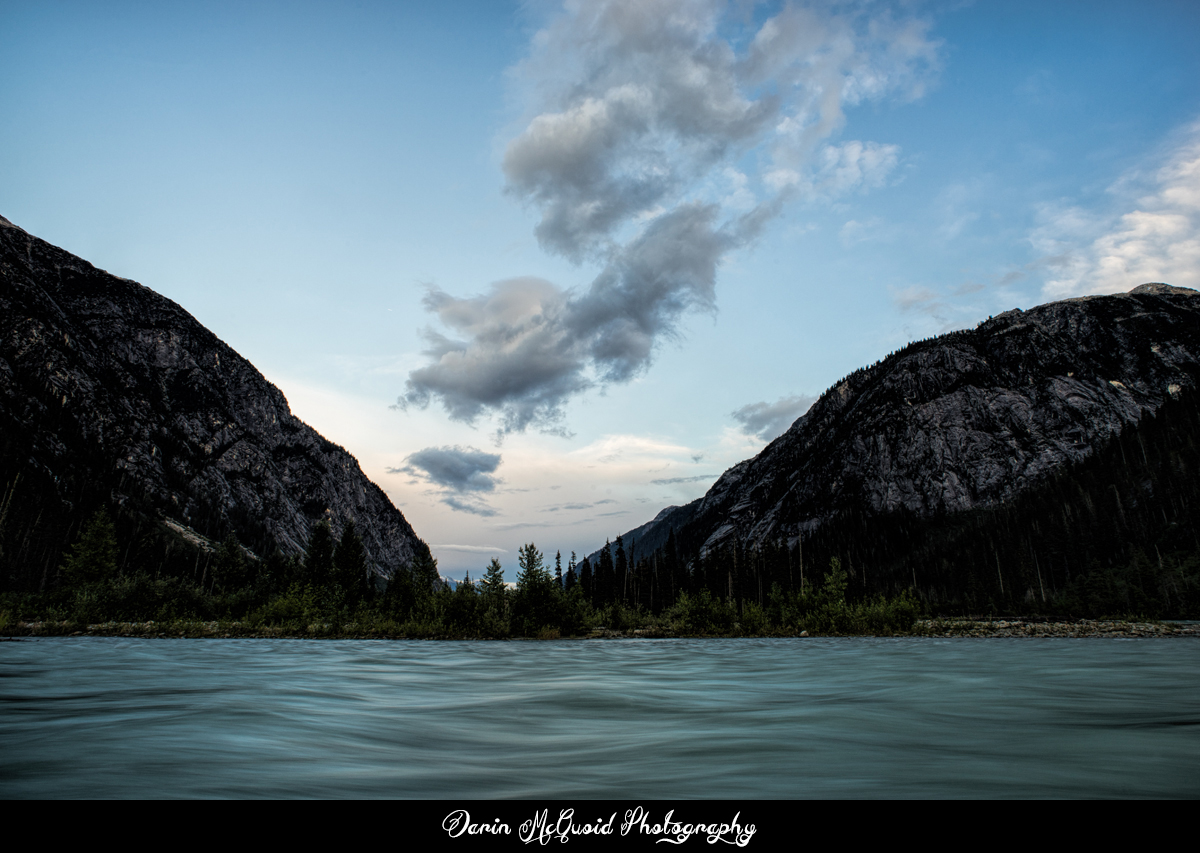
The Clendenning was once British Columbia's most popular multi-day trip. Somehow that title now goes to the Stikine, but that's a whole different story. Personally I'd written off the Clendenning as class IV and something that I would do in my "early retirement paddling". Little did I know how wrong I was. No surprise there. Having done the Stikine first thing in our trip, we have also paddled most of the Whistler classic runs like the Box Canyon of the Ashlu, various Cheakamus runs, Callaghan Creek and what not. Two of the team from Austria are due to fly out and we have just enough time to squeeze in one last bit of excitement. We've been watching the Elaho gauge for days, and it seems to be dropping to 200cms. Still rather on the high end, we read that it is "V at 200 cms and up" while another write up from well traveled paddlers describe it as a positive portage fest at 200cms. There is only one way to find out, so we head to Green Lake in north Whistler to talk about flying.
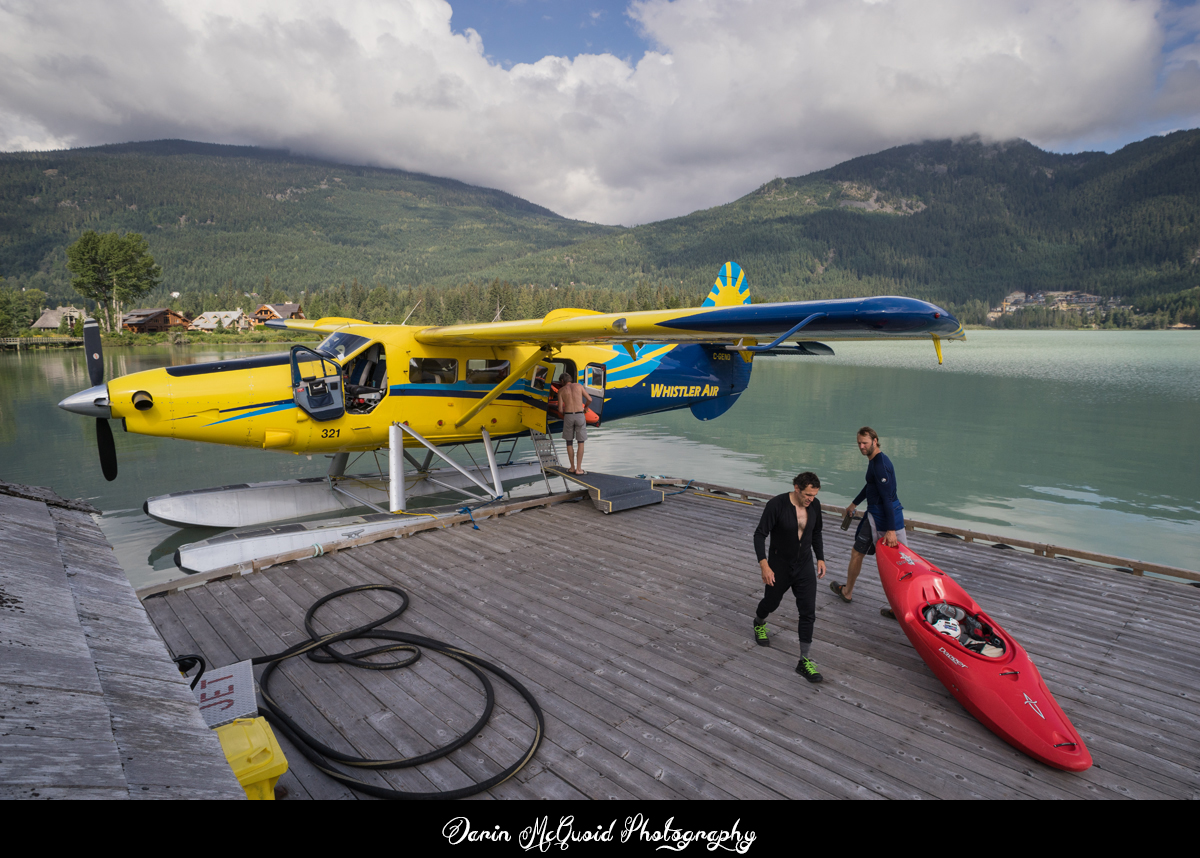

The Clendenning was once British Columbia's most popular multi-day trip. Somehow that title now goes to the Stikine, but that's a whole different story. Personally I'd written off the Clendenning as class IV and something that I would do in my "early retirement paddling". Little did I know how wrong I was. No surprise there. Having done the Stikine first thing in our trip, we have also paddled most of the Whistler classic runs like the Box Canyon of the Ashlu, various Cheakamus runs, Callaghan Creek and what not. Two of the team from Austria are due to fly out and we have just enough time to squeeze in one last bit of excitement. We've been watching the Elaho gauge for days, and it seems to be dropping to 200cms. Still rather on the high end, we read that it is "V at 200 cms and up" while another write up from well traveled paddlers describe it as a positive portage fest at 200cms. There is only one way to find out, so we head to Green Lake in north Whistler to talk about flying.

Clendenning
Creek starts just forty seven miles from Whistler as it flows out of
its namesake; Clendenning Lake. From there it's nearly twenty miles to
the confluence of the Elaho. Getting to said lake is no simple task, there are no roads or trails.
When the founder of Whistler Air owned the company he would fly to Clendenning Lake
with eight people and kayaks in a de Havilland Otter. A short time ago
Whistler Air was bought by Harbor Air, the world's largest float plane
operation. Harbor Air had no interest in flying us to Clendenning Lake.
Eventually we were able to talk directly to the pilots. They were ready
for a break from being glorified taxi drivers shuttling rich tourists from Vancouver to Whistler.
Let's scratch that, if you're a rich tourist up here you own a "cabin" and personal float plane.
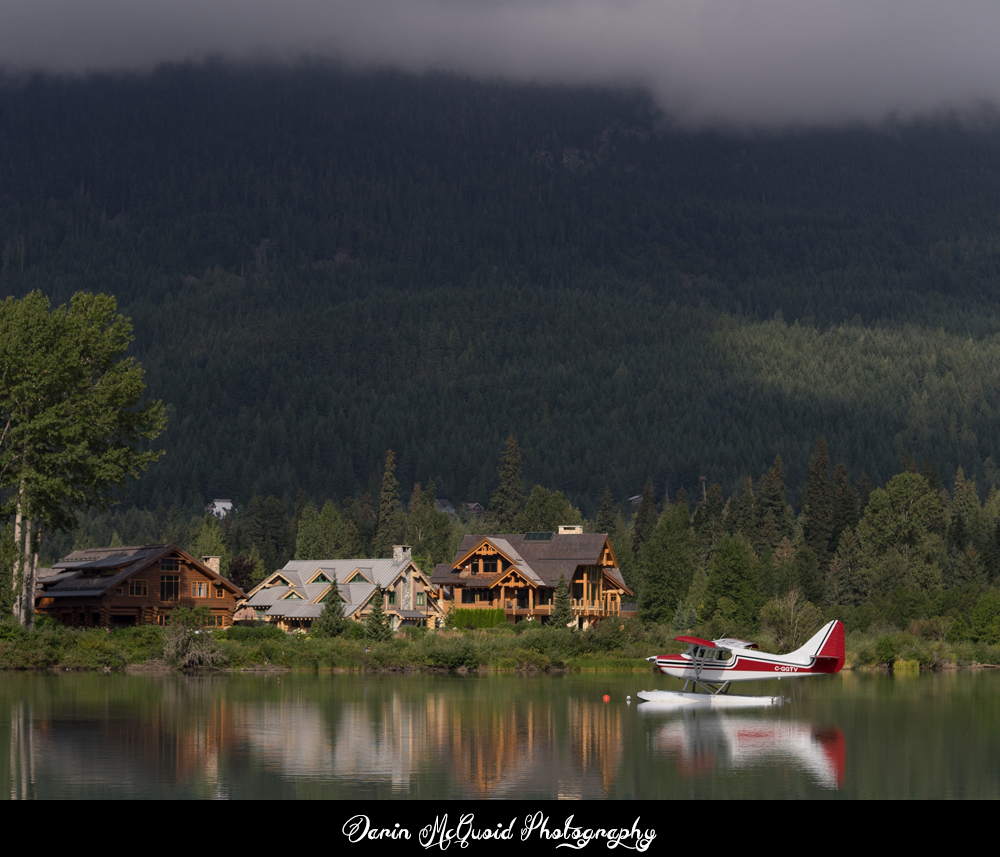
Rok Sribar packs for an adventure.
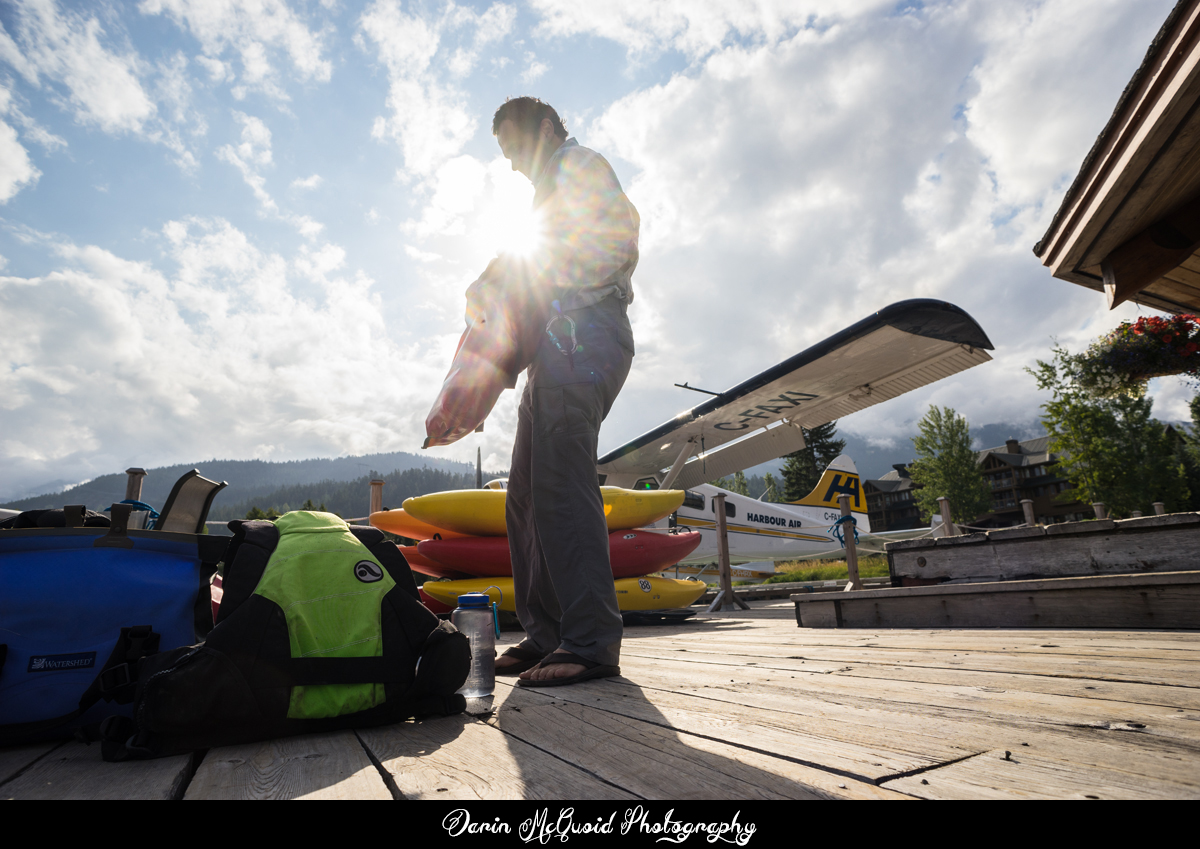
All the kayaks into the big bad Otter.

In the air with Marco Guidi, Wolfgang Leitner, Rok Sribar and Darin McQuoid.
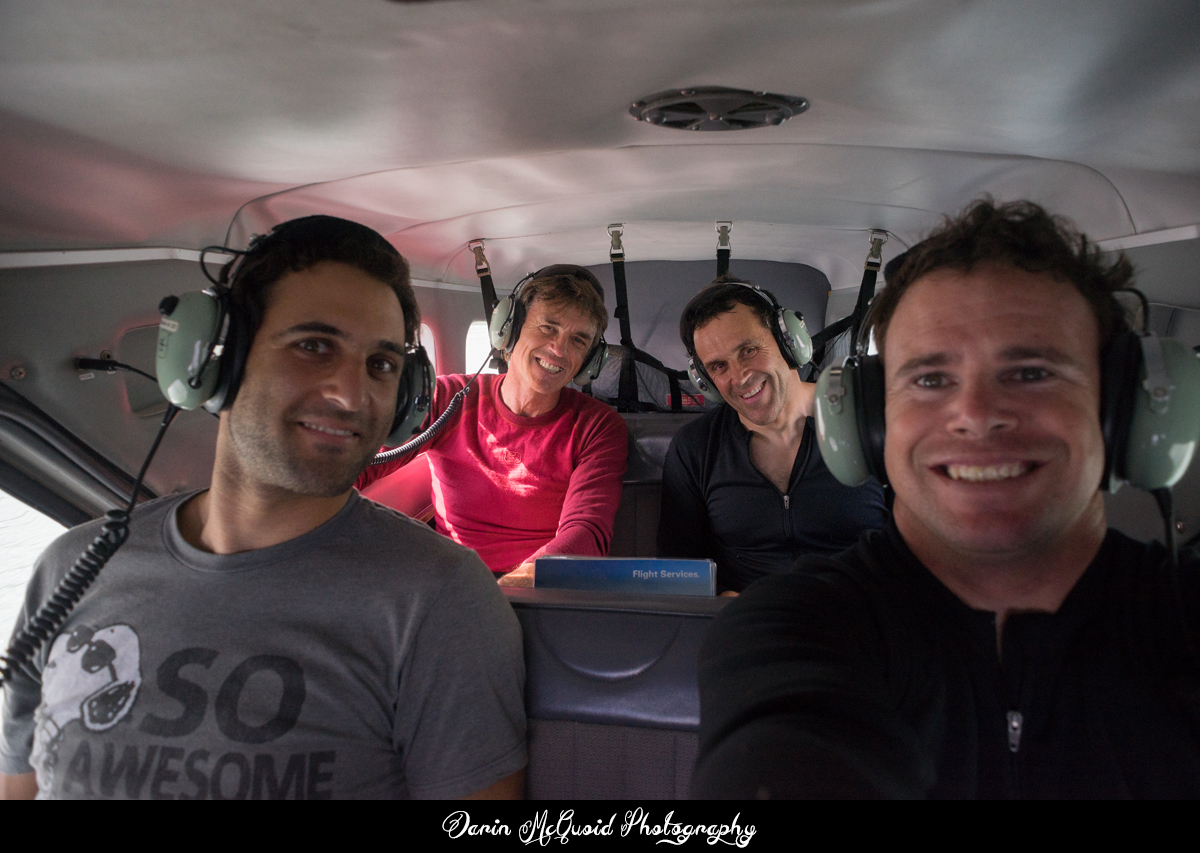
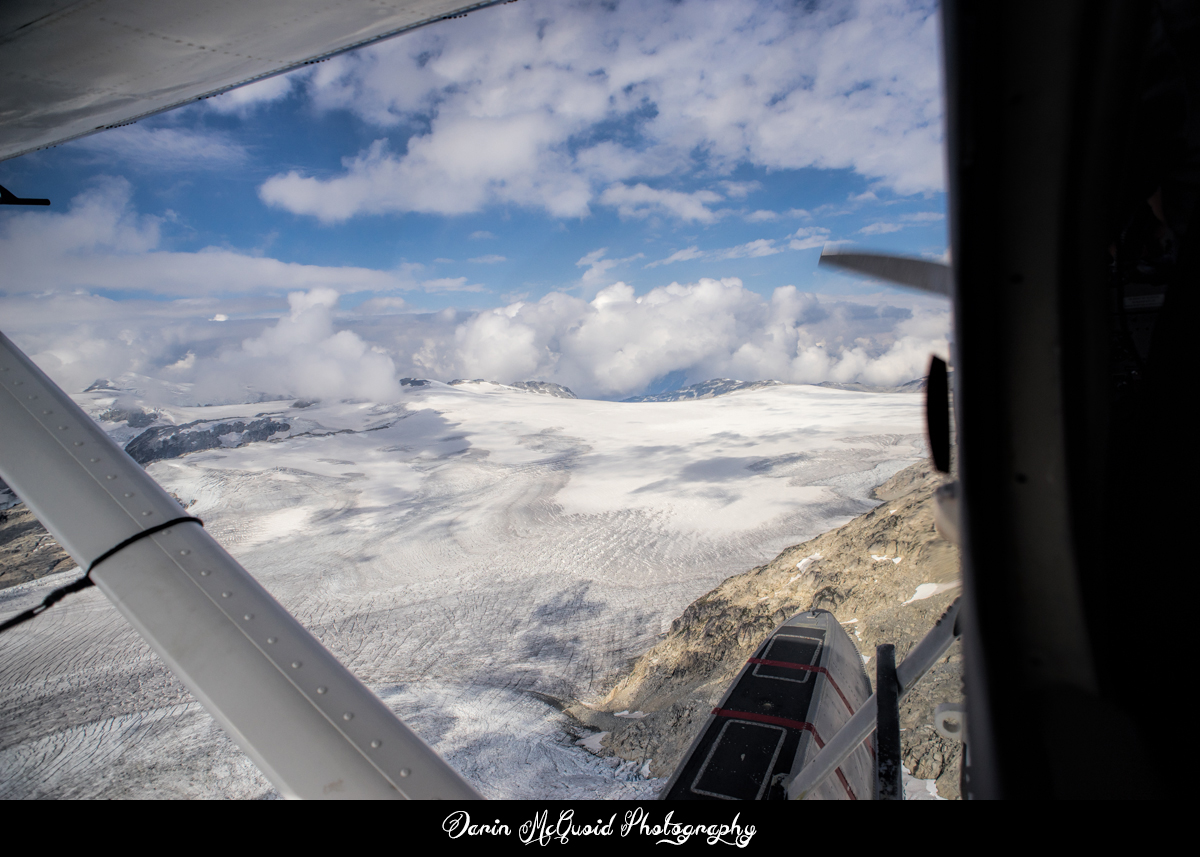
Crossing over the mountains we head up the Clendenning, getting a sense for how remote this section is.
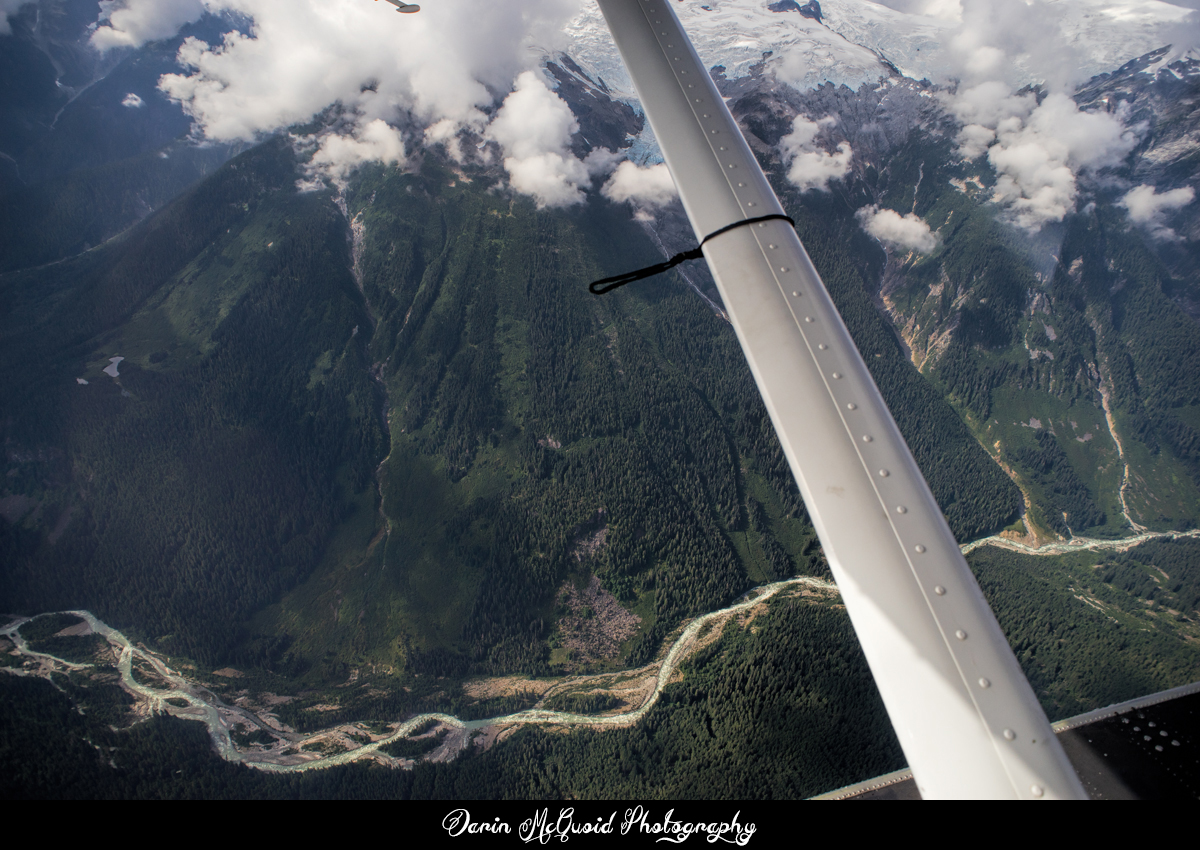

Due
to new corporate policy there is no way they can take all of us in the
Otter, because kayaks will block an exit door. The best we can do is
take six kayaks and one person in the Otter, and the other five of us
in the smaller Beaver. Prior to the trip we'd read about $250 a person,
but oh the times have changed. Now it takes two pilots, two planes, and
around $500 a person. We take time to consider. It's not every day that
four Austrians and an Italian are in British Columbia, so we're all in.
Rok Sribar packs for an adventure.

All the kayaks into the big bad Otter.

In the air with Marco Guidi, Wolfgang Leitner, Rok Sribar and Darin McQuoid.

Due
to clouds we head up the Pemberton Valley north of Whistler and hope
for clear visibility getting over the mountains, we might have to turn
back at any moment if visibility gets too low. Just enough visibility is
there for us to proceed safely as we cross over the glacier fields.

Crossing over the mountains we head up the Clendenning, getting a sense for how remote this section is.

The
more powerful Otter is in the lead and makes a quick u-turn to land on
Clendenning Lake. If you look closely it's visible on the approach.
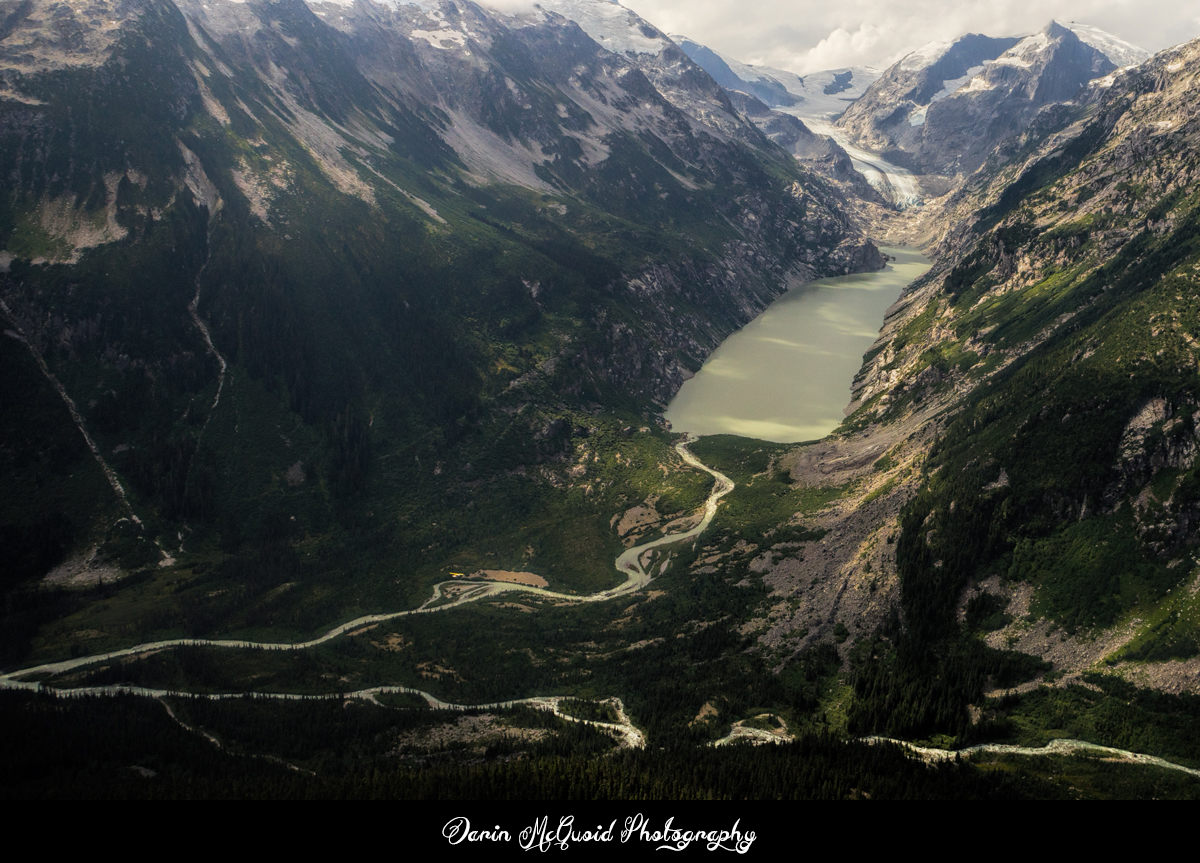
A view of Clendenning Lake as we head in to landing.
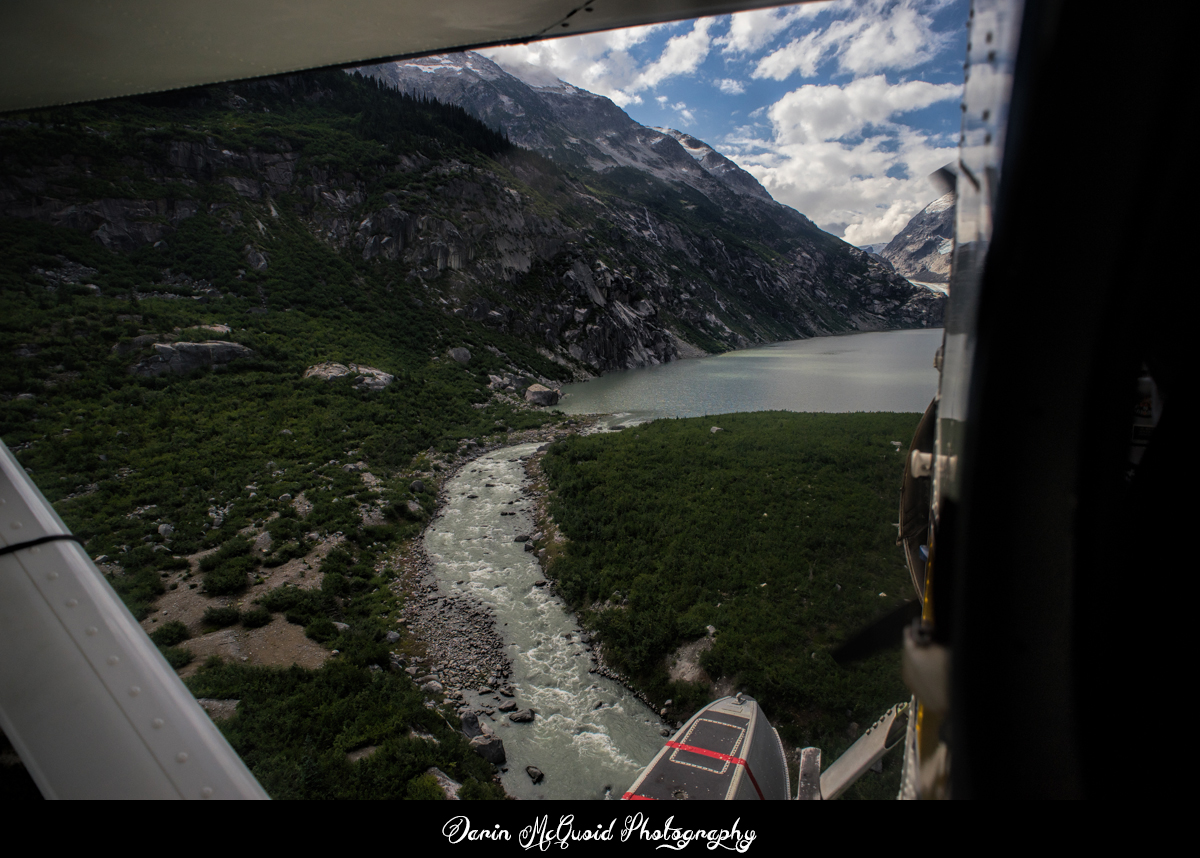
Our pilots are as excited to be here as we are, and a big thanks to them for taking up the adventure of flying us here.
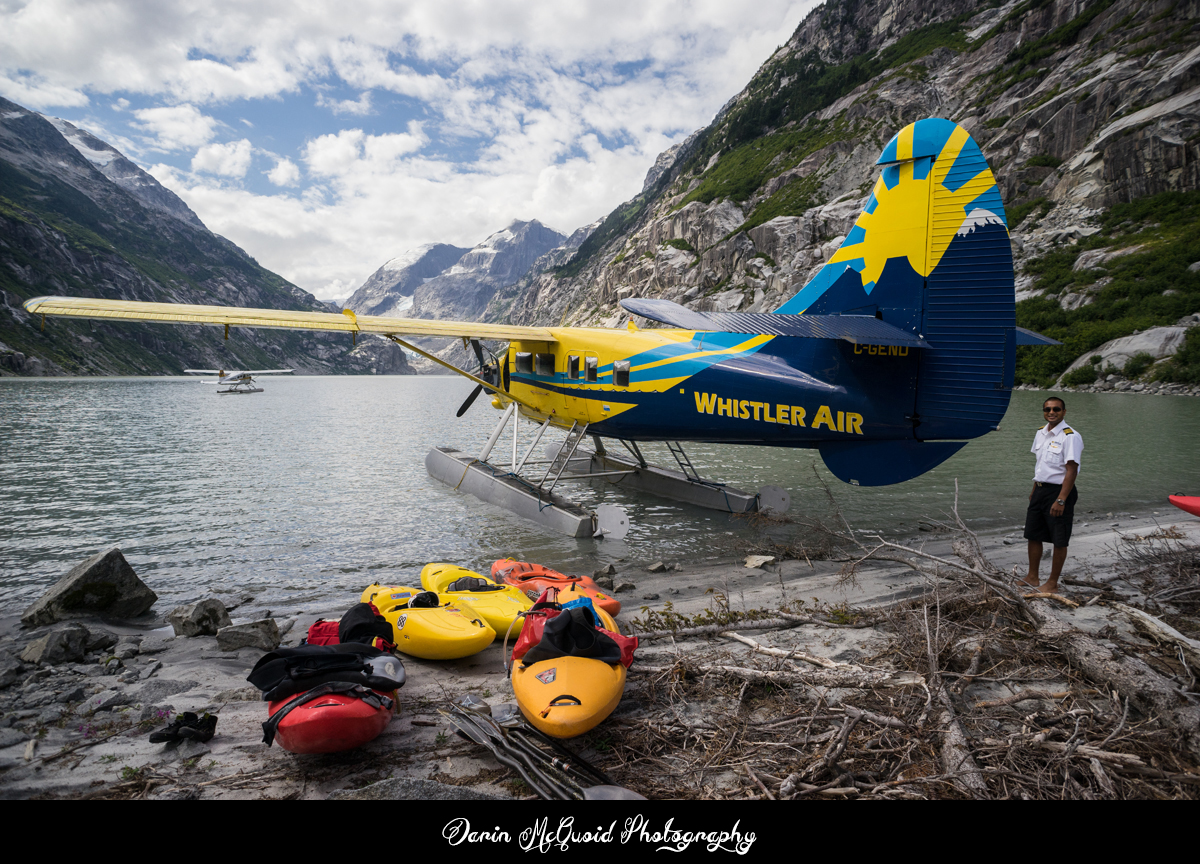
Michael Wutti at the start of Clendenning Creek.
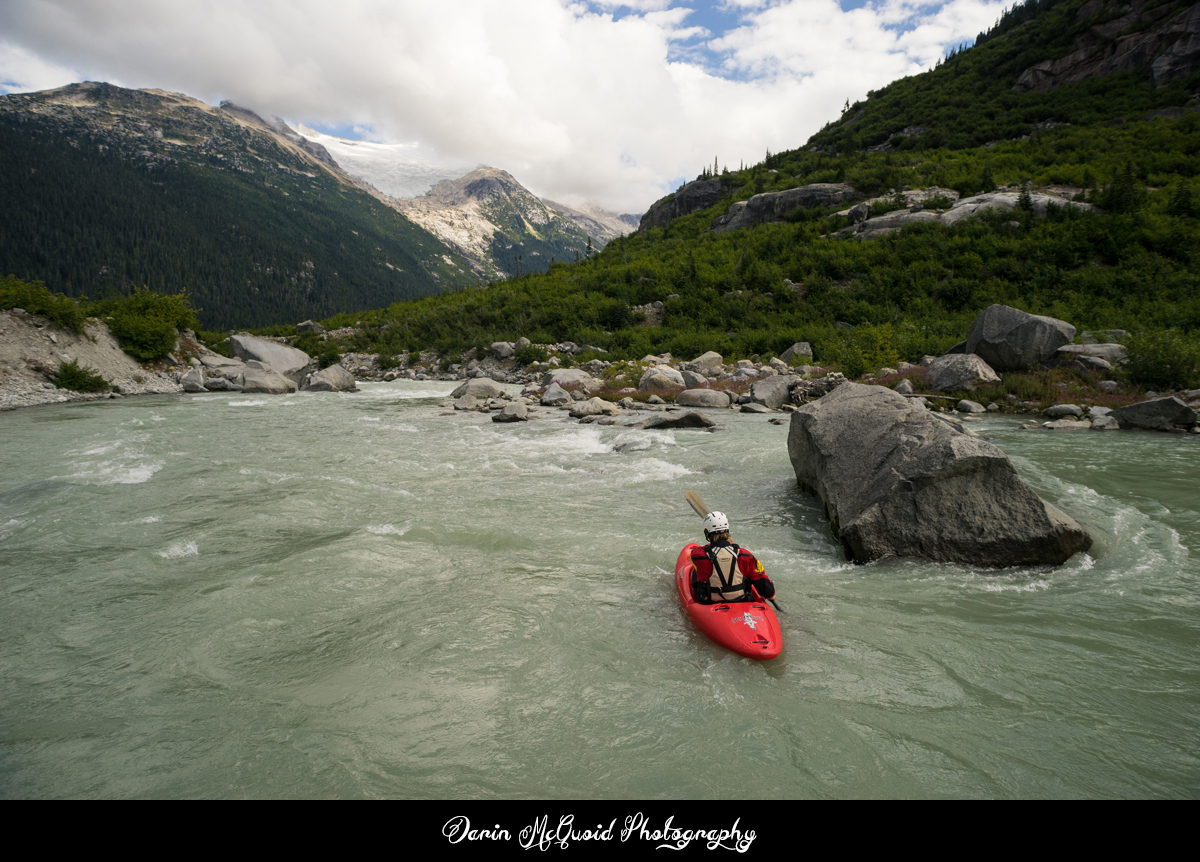

A view of Clendenning Lake as we head in to landing.

Our pilots are as excited to be here as we are, and a big thanks to them for taking up the adventure of flying us here.

With
our gear unloaded we waste no time getting ready to go. Half the team
flies home in three days, and with the high water levels we want to be
sure to make it out in time. It's quite incredible, Clendenning Creek
flows right out of the lake with no log jams or other obstructions.
There is certainly no shortage of water as we begin the trip, there are
many routes and not too many rocks showing in the first rapids. Many
write-ups talk about boulder garden creeking but this seem far from a
creek.
Michael Wutti at the start of Clendenning Creek.

Some
nice warm up behind us and a
glacier sits high above on the right. An old avalanche path leads to
the river and it makes sense to see a boulder pile just downstream. We
route through one rapid then scramble for eddies. This one doesn't look
so nice. The whole team portages fifteen feet then it's time to make a
decision. From what we can see the river isn't going to get any easier
for some time. We either start running it, or walking. As we've
portaged on both sides of the river there is no way to communicate this
decision process. Oddly enough we manage to make a decision unspoken,
in that odd way experienced teams can come to conclusion. The team
doesn't want to portage the rest of the river. We put back on and it's
one endless boulder garden with big
moves, high consequences and just enough eddies.
Manu Koehler probes.
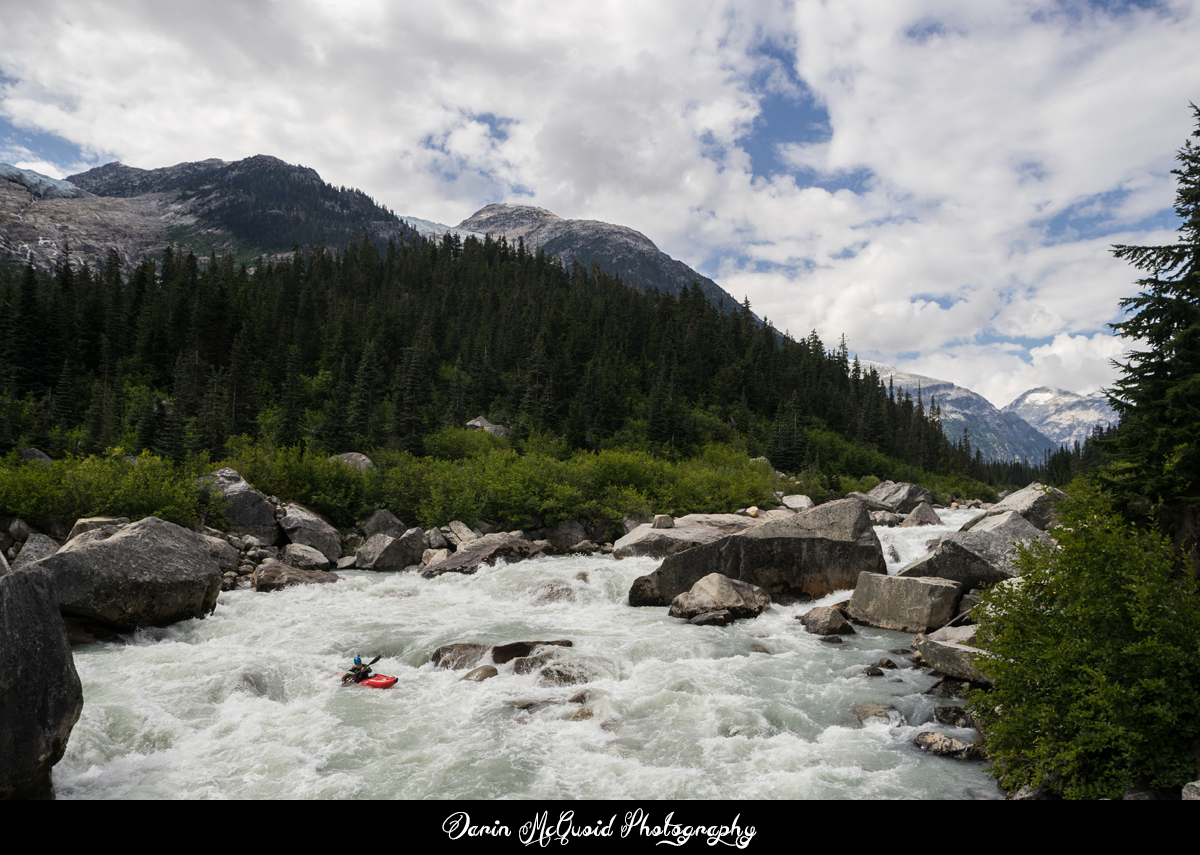
Rok Sribar making one of many crux moves through the steep cataract.
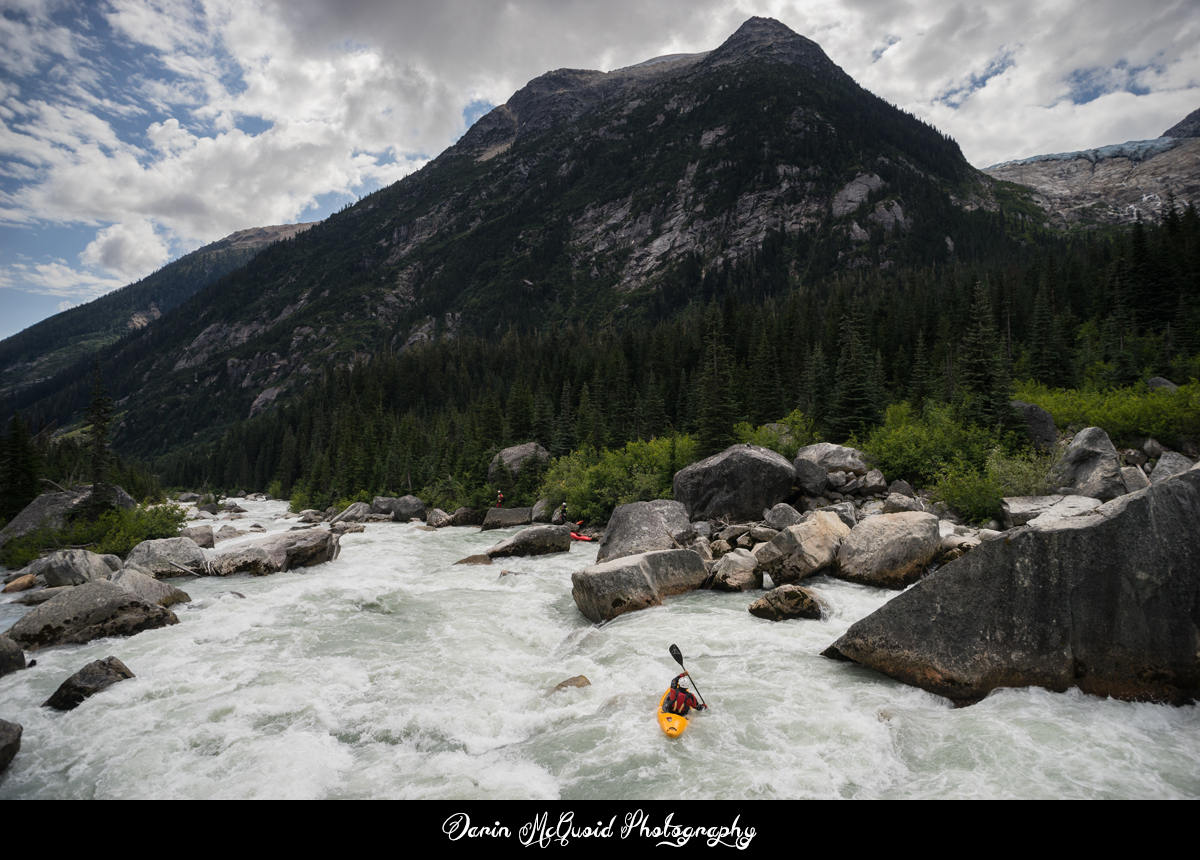
If the riverside wasn't such a mess to portage through we might be more tempted. Instead we put on our big boy pants and get to work. Wolfgang Leitner heads into the action.
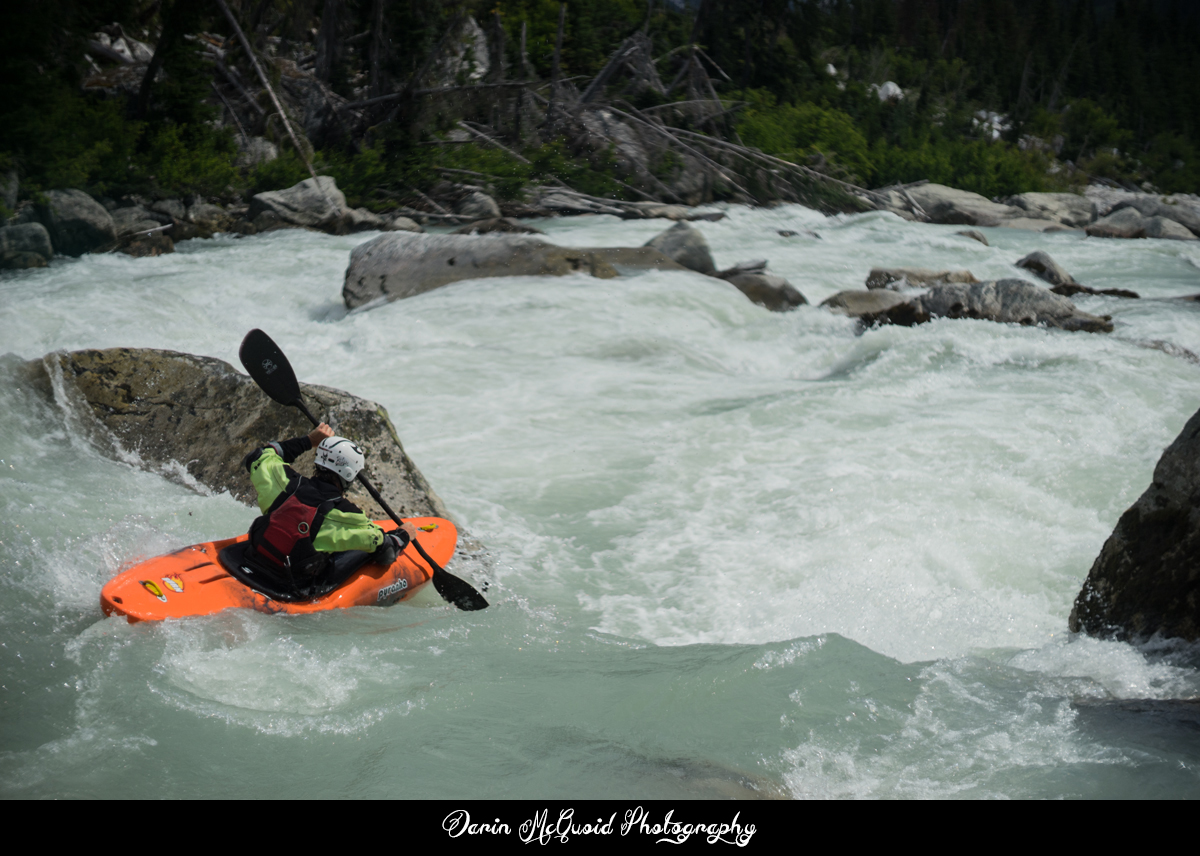
Half fun, half terrifying in my opinion. Demanding enough we don't have time to think about that. Downstream progress is the name of the game. Michael Wutti.
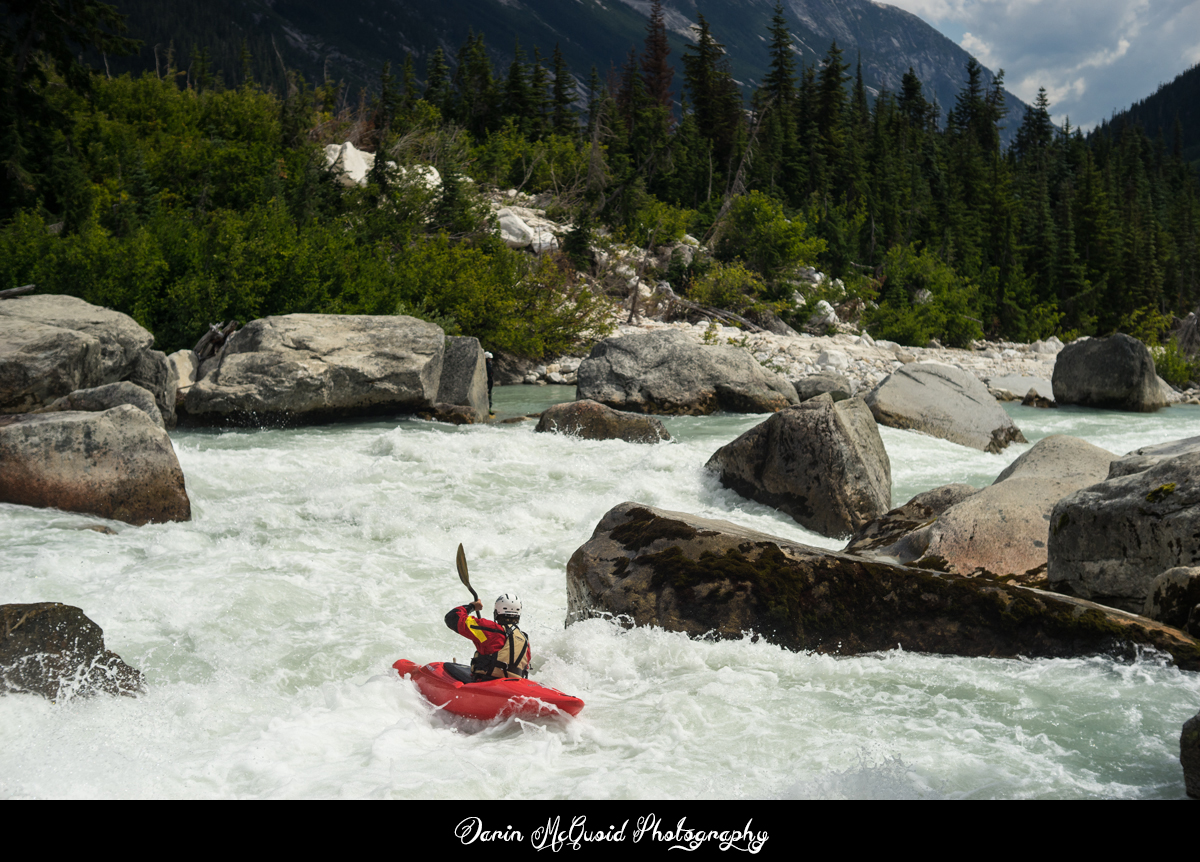
We'd be enjoying the scenery more if we didn't have tunnel vision on the pushy water. Rok Sribar boofs.
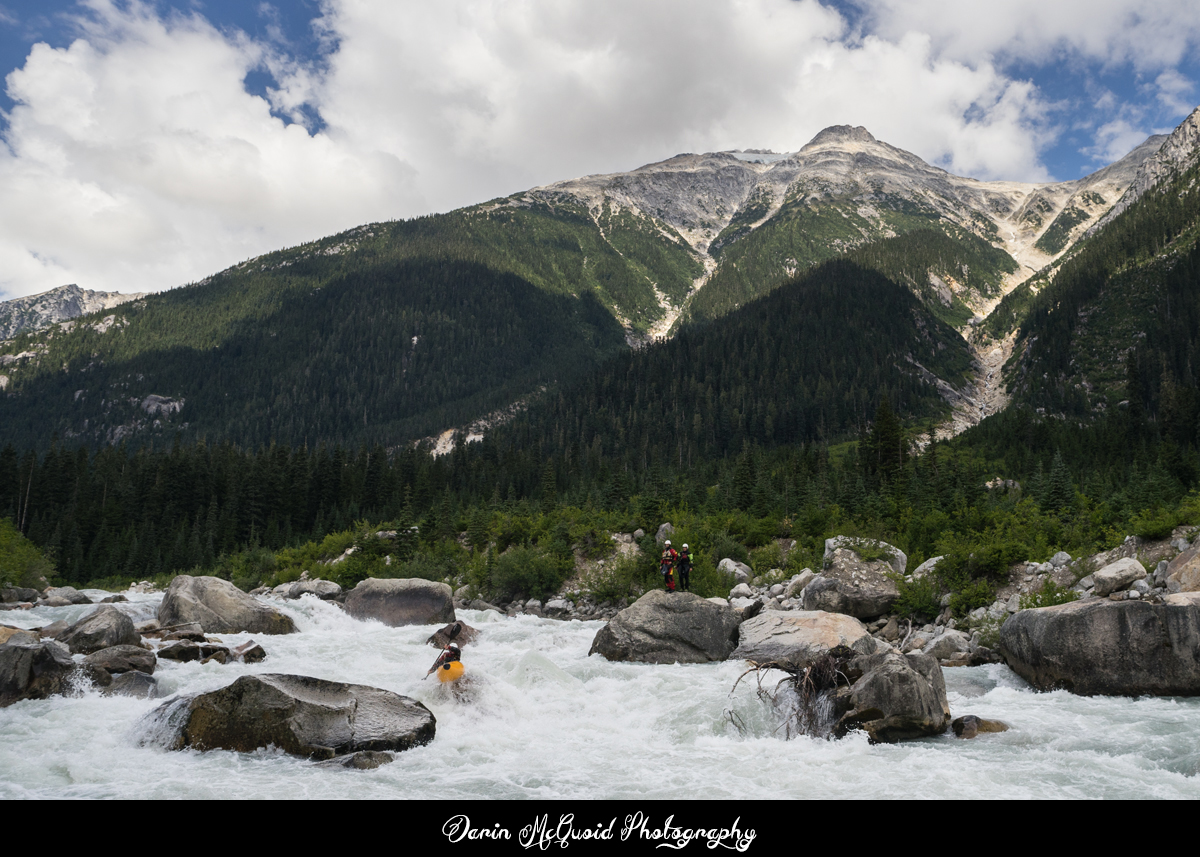
Manu Koehler signals for Rok Sribar.
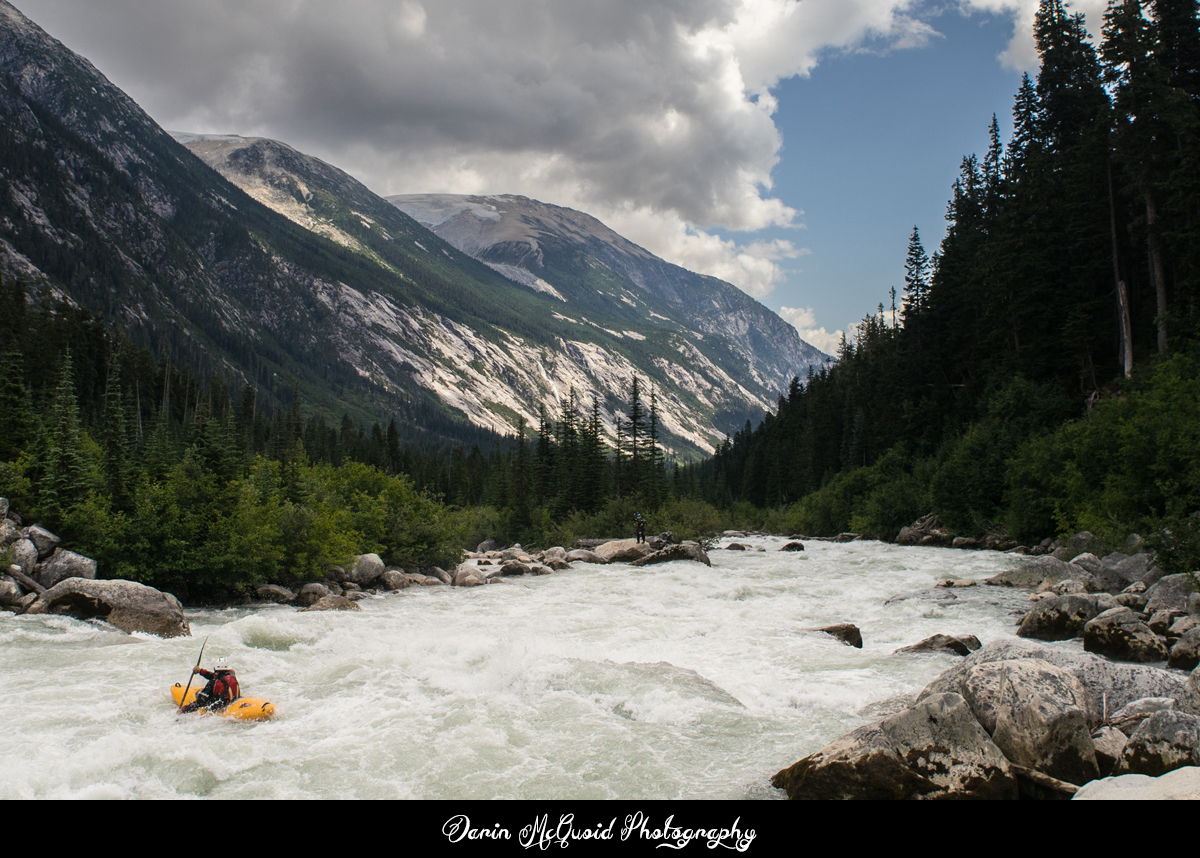

How much wind? Enough wind.
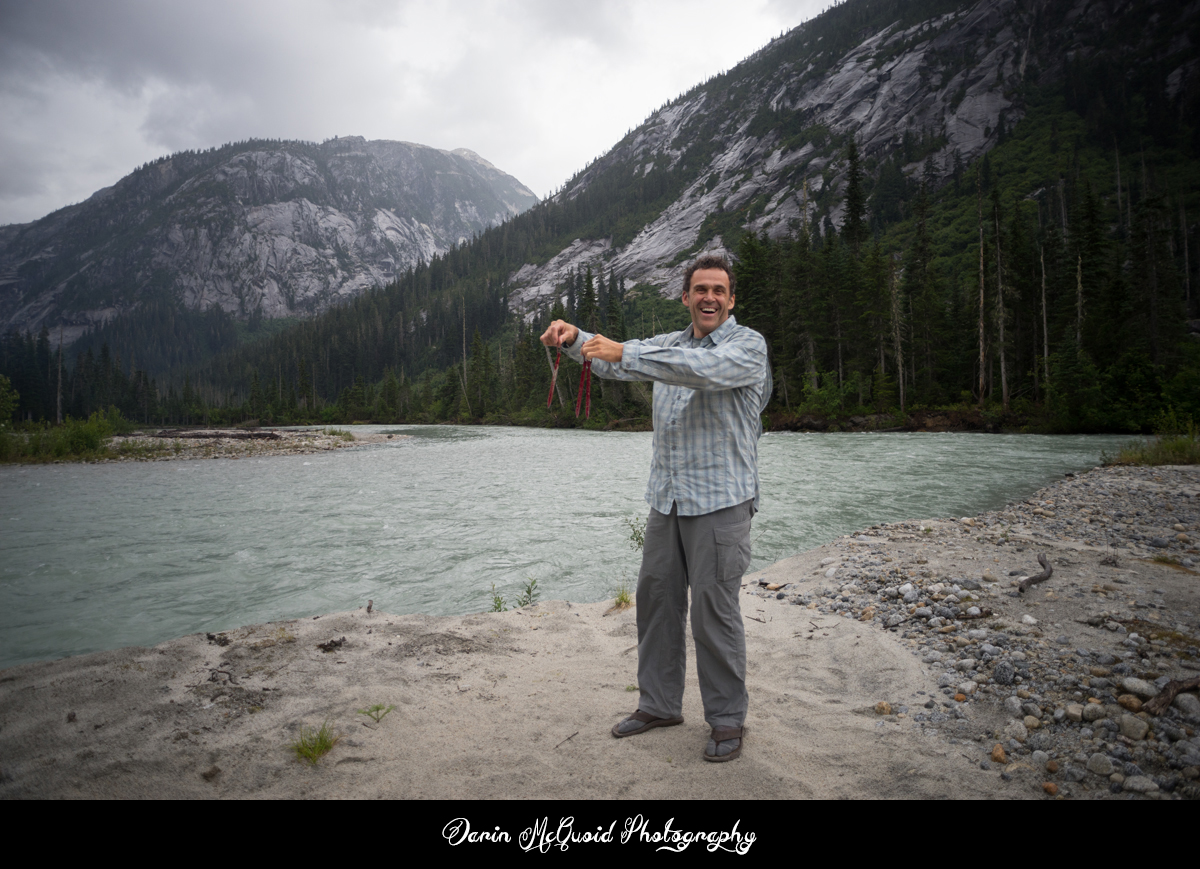
The race is on, a tent full of gear is in the river. Heavy rain begins to fall.
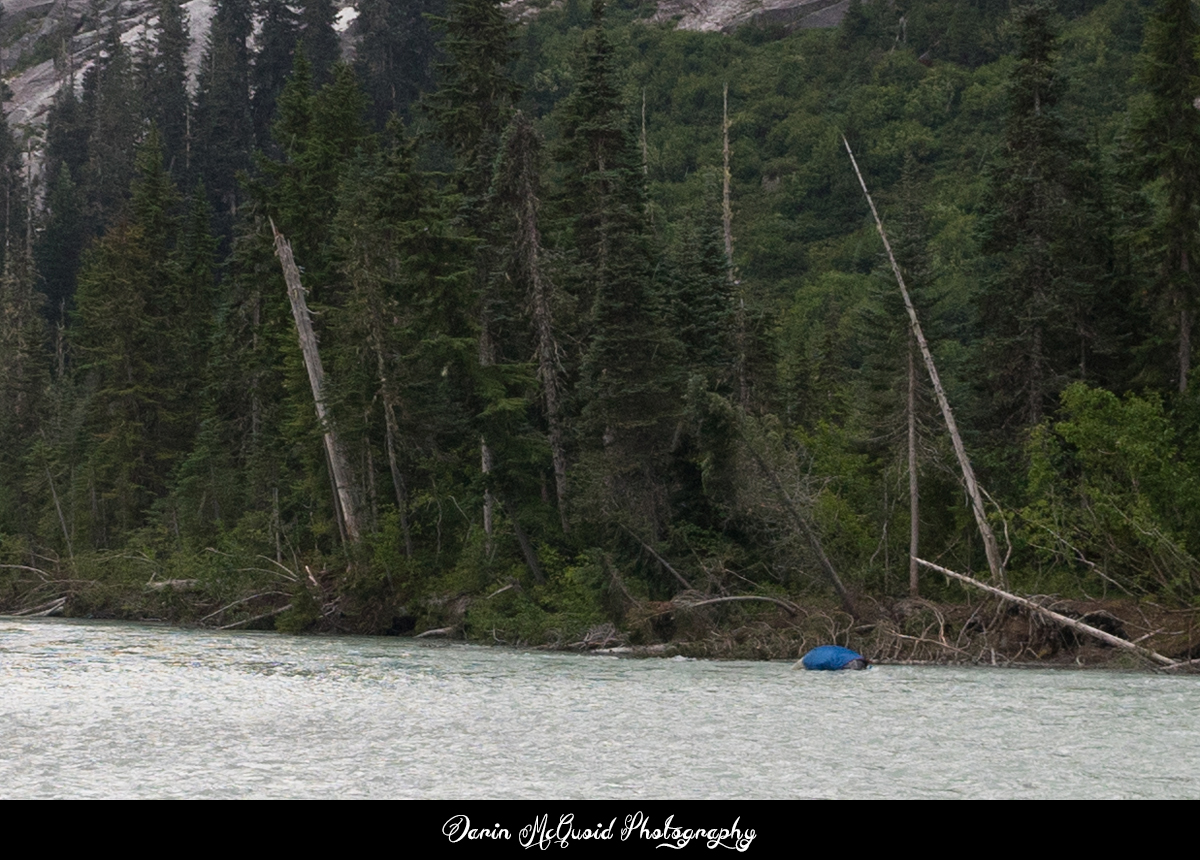
It's a scramble to keep other tents from flying off while stuffing dry gear into shelter while one person charges after the tent that's headed downstream. Water levels rise quickly.
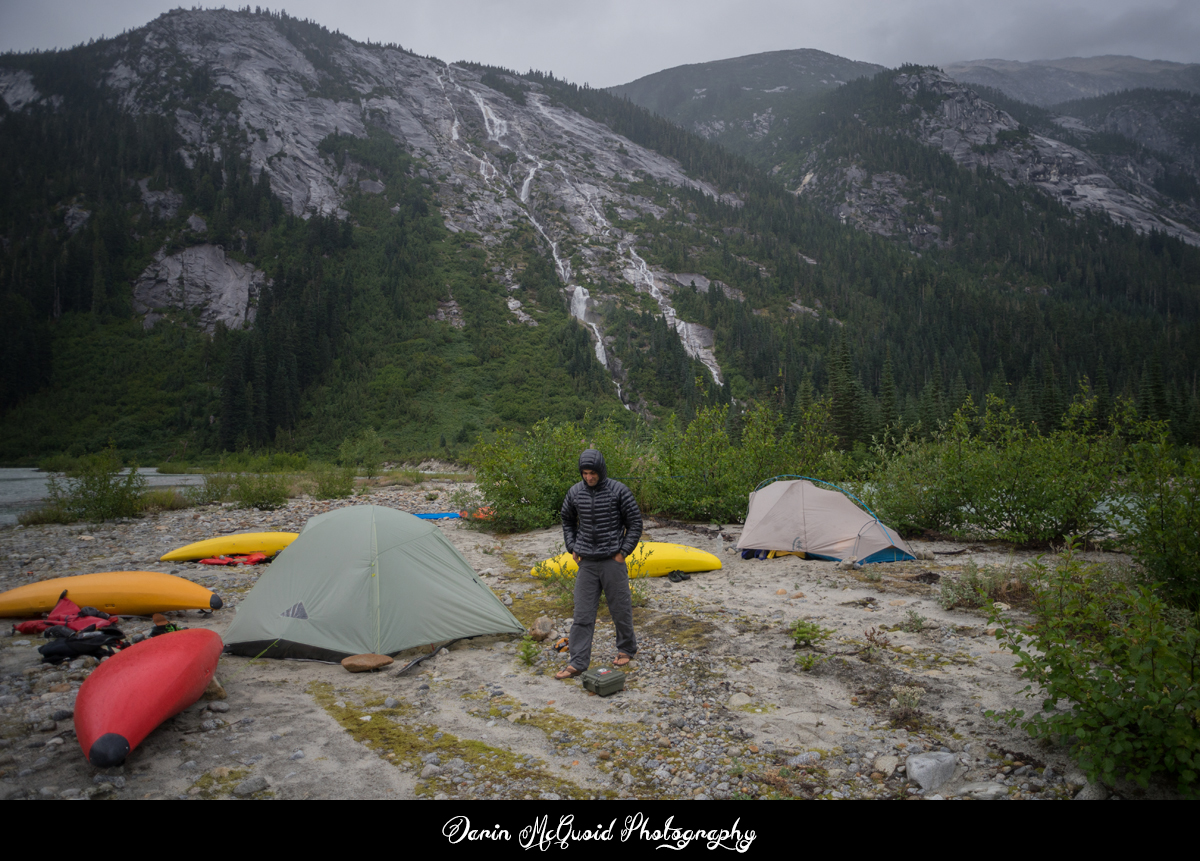
Once everything is safe we figure it's time to cook up some hot food so we won't have to waste time cooking after the recovered gear comes back wet. We have a brand new unopened fuel canister that we won't be cooking on because the company forgot to put threads on it.
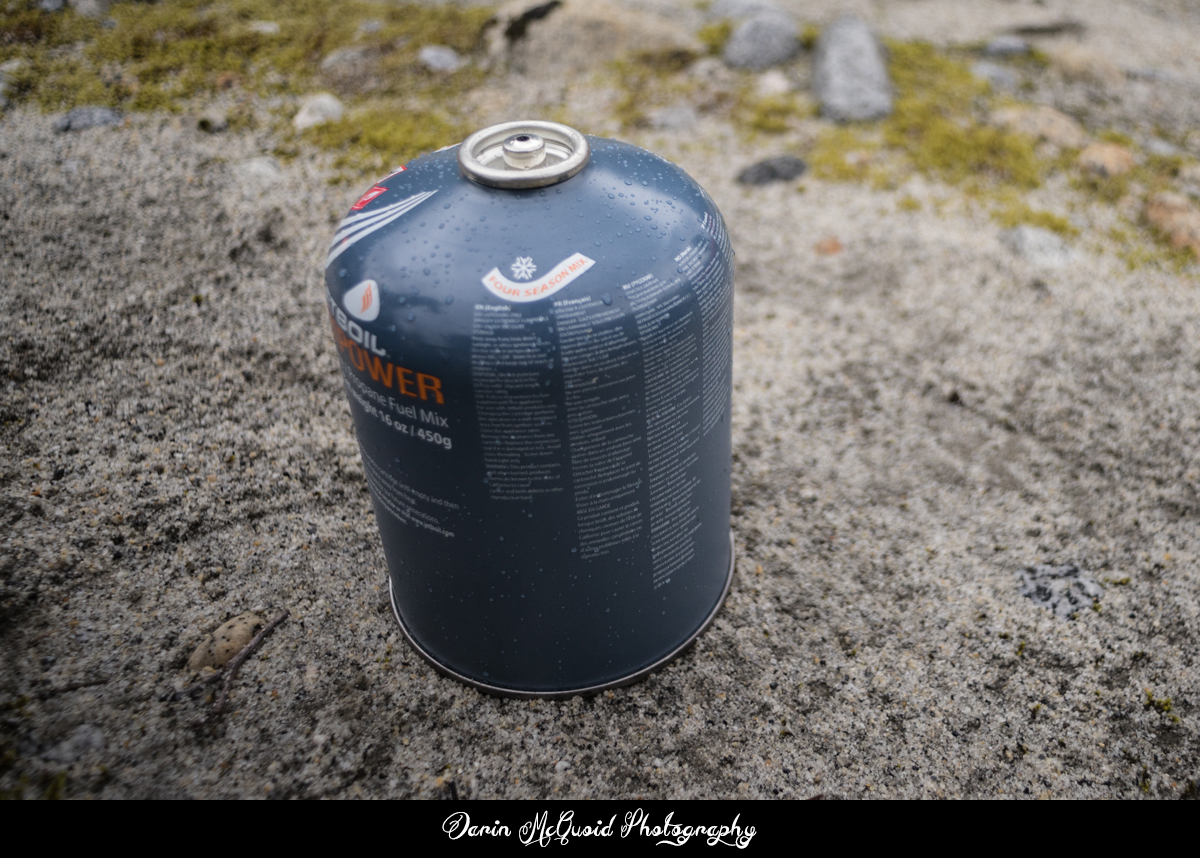
We were not planning on having a fire, but things must be done to cook food and avoid hypothermia. Drying gear at sunset, thankfully the rain stops and skies clear.
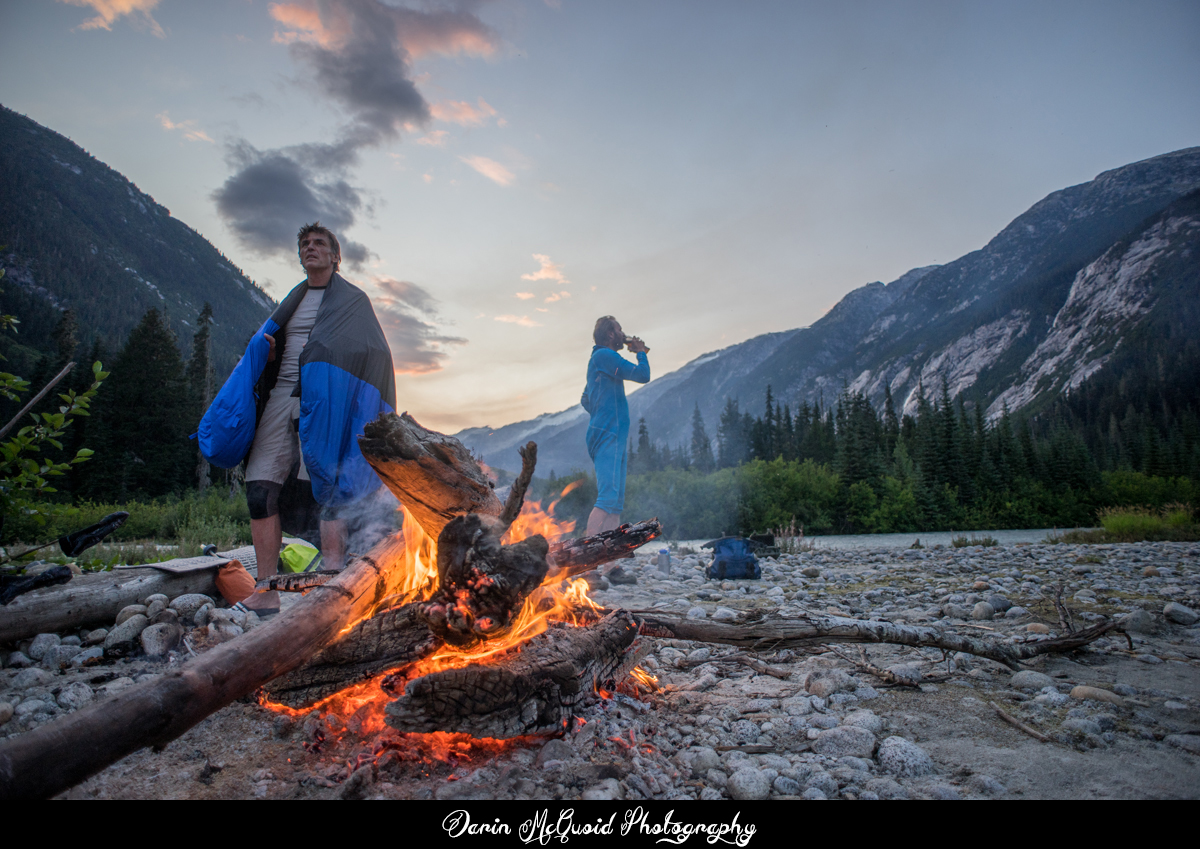

Rok Sribar making one of many crux moves through the steep cataract.

If the riverside wasn't such a mess to portage through we might be more tempted. Instead we put on our big boy pants and get to work. Wolfgang Leitner heads into the action.

Half fun, half terrifying in my opinion. Demanding enough we don't have time to think about that. Downstream progress is the name of the game. Michael Wutti.

We'd be enjoying the scenery more if we didn't have tunnel vision on the pushy water. Rok Sribar boofs.

Manu Koehler signals for Rok Sribar.

We
regroup and scout the final corner of the above rapid. It's a good
rapid and things don't look so bad downstream, more your standard IV-V
read and run. We confer at the top of the rapid and make quick progress
through several kilometers of big crashing waves, dodging terrifying
holes and laughing when we aren't too scared. Then the gradient
flattens out, it's late afternoon and we see a perfect island to camp
on. With the scenery around it's easy to give the site a thumbs up and
setup our tents in the sunshine. We've been in British Columbia for two
weeks and it hasn't really rained on us. We congratulate ourselves on
the luck of it all. Then the sun goes behind a cloud and out of nowhere
the still air parts with a huge burst of wind.

How much wind? Enough wind.

The race is on, a tent full of gear is in the river. Heavy rain begins to fall.

It's a scramble to keep other tents from flying off while stuffing dry gear into shelter while one person charges after the tent that's headed downstream. Water levels rise quickly.

Once everything is safe we figure it's time to cook up some hot food so we won't have to waste time cooking after the recovered gear comes back wet. We have a brand new unopened fuel canister that we won't be cooking on because the company forgot to put threads on it.

We were not planning on having a fire, but things must be done to cook food and avoid hypothermia. Drying gear at sunset, thankfully the rain stops and skies clear.

-Day Two-
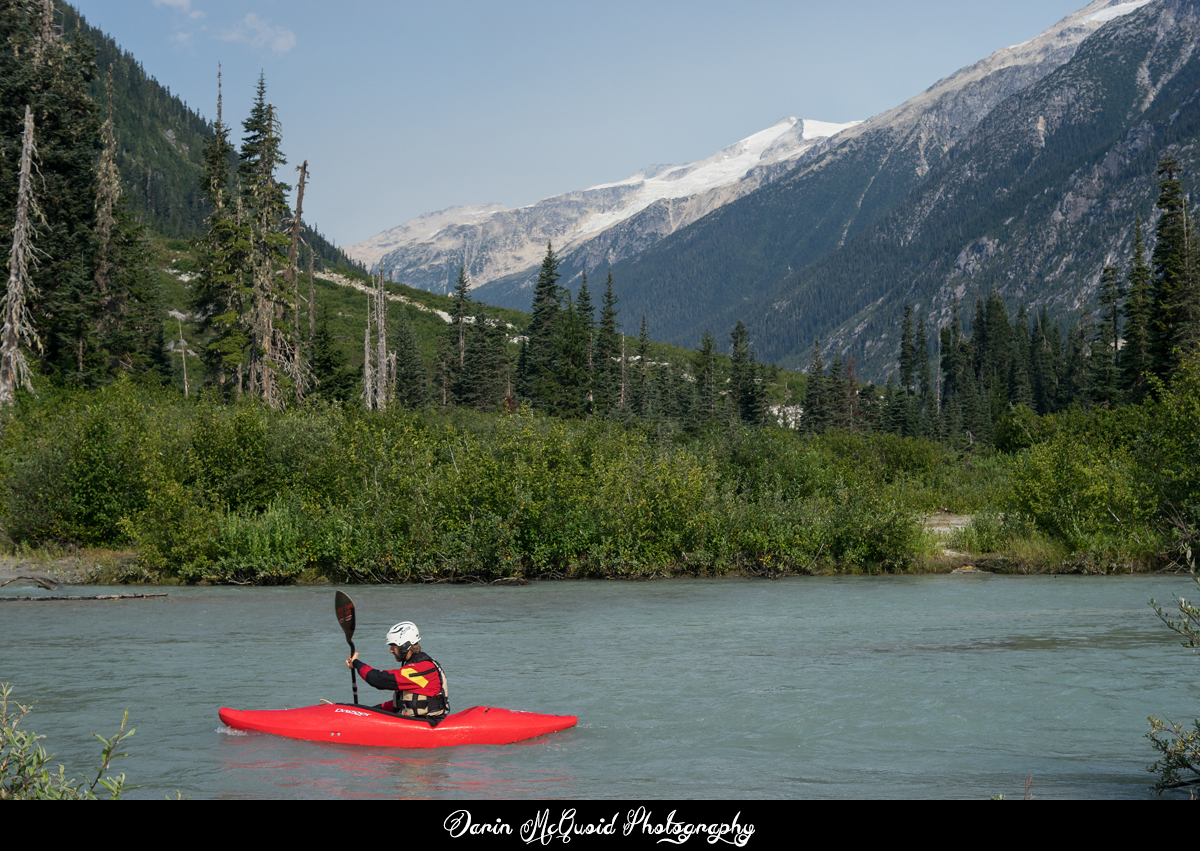
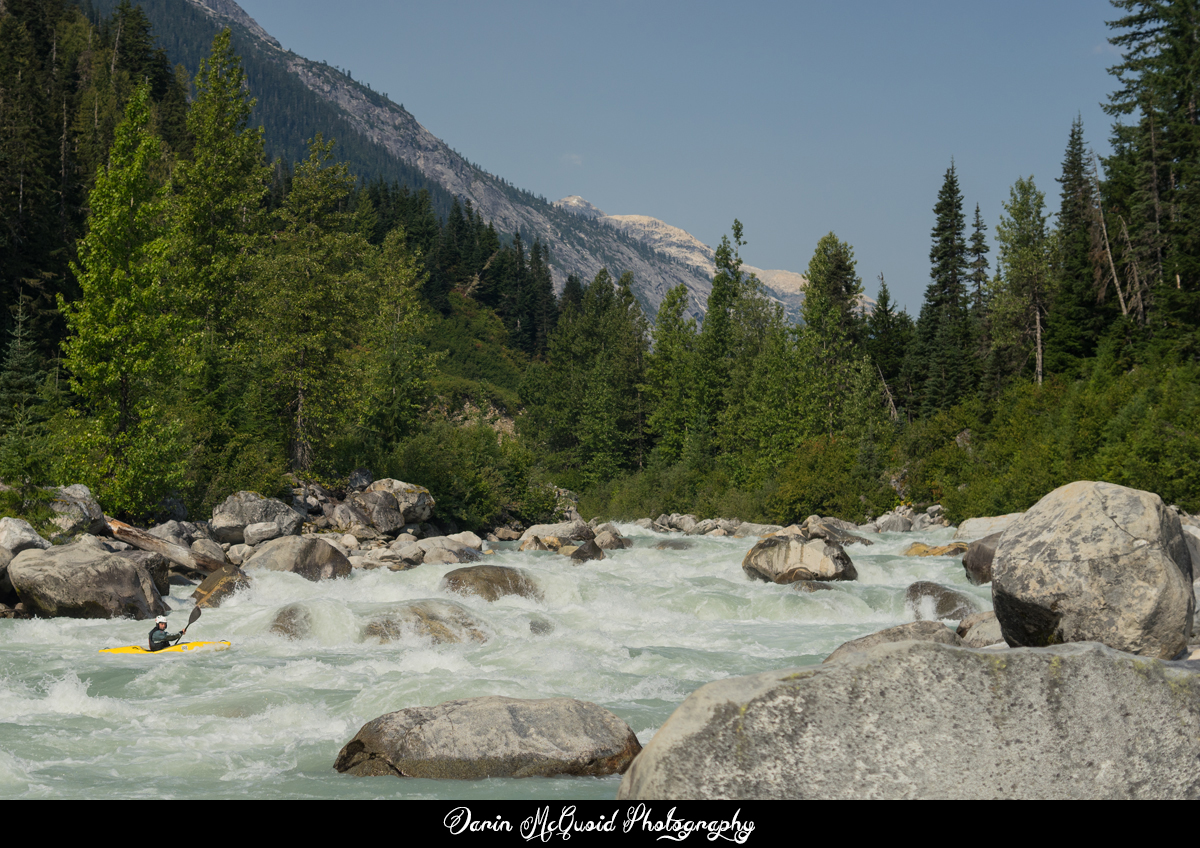
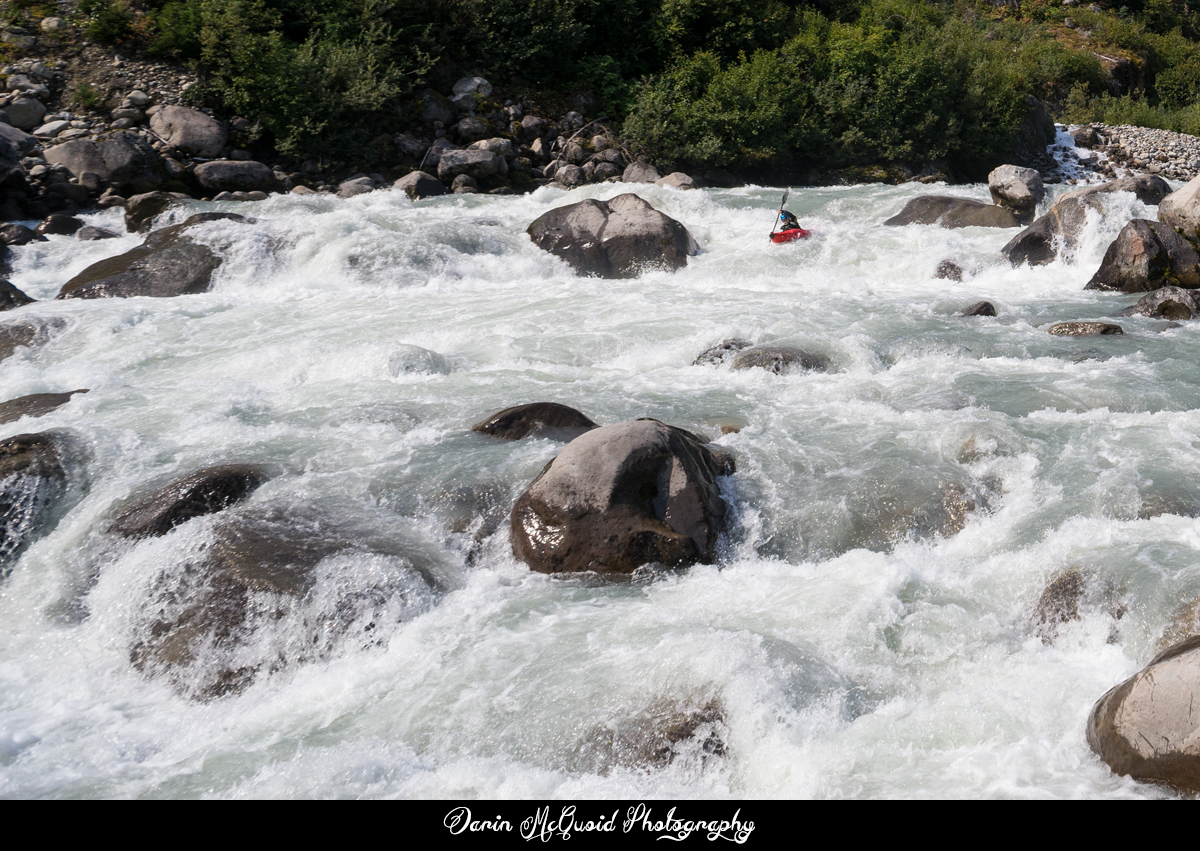
Rok Sribar lines up left for the bottom half.
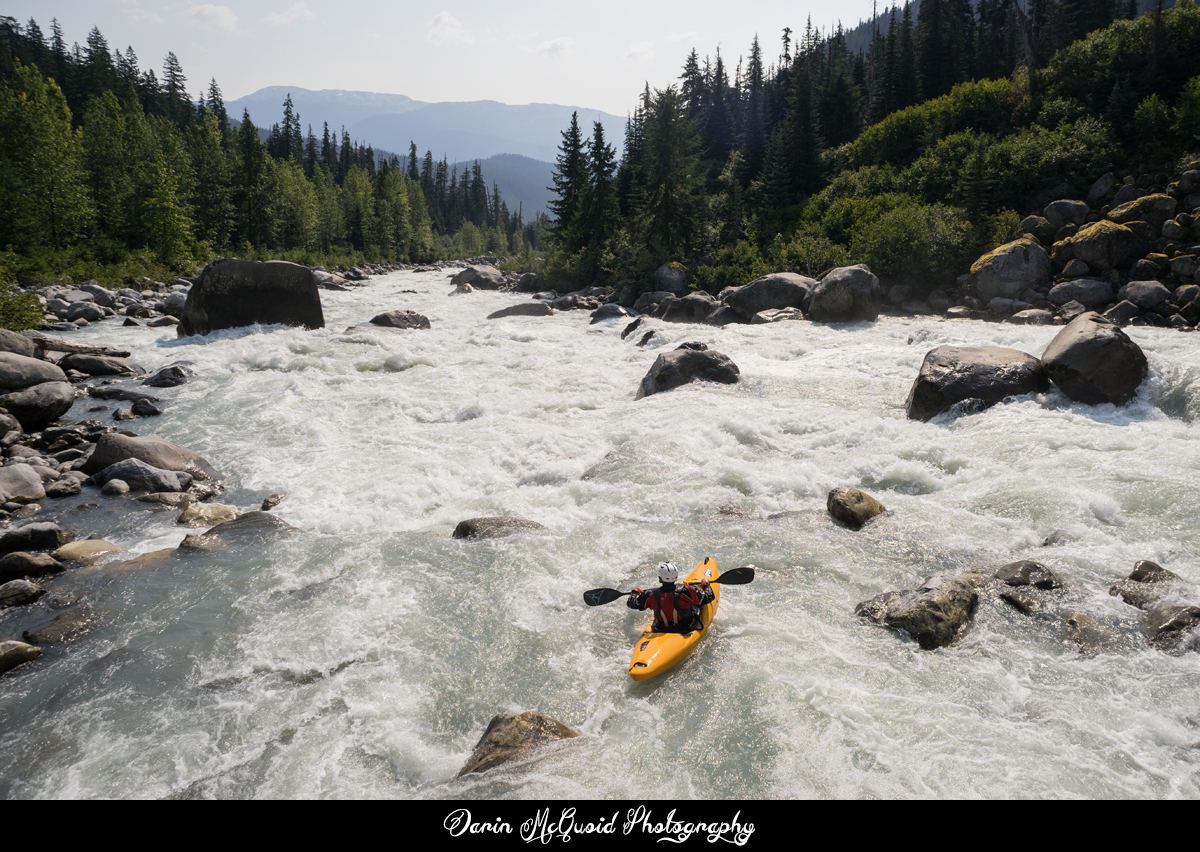
Manu Koehler finds an alternative approach.
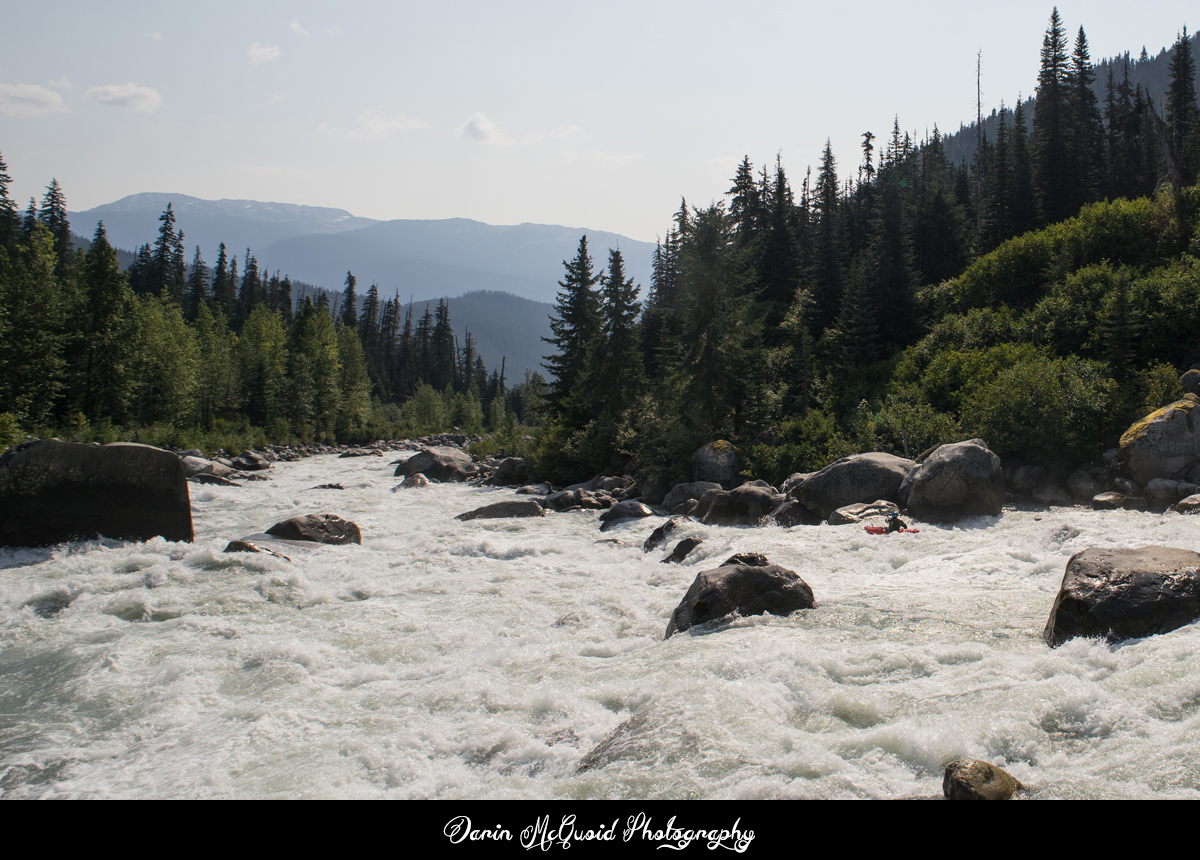
Clendenning Creek, one fine piece of whitewater.
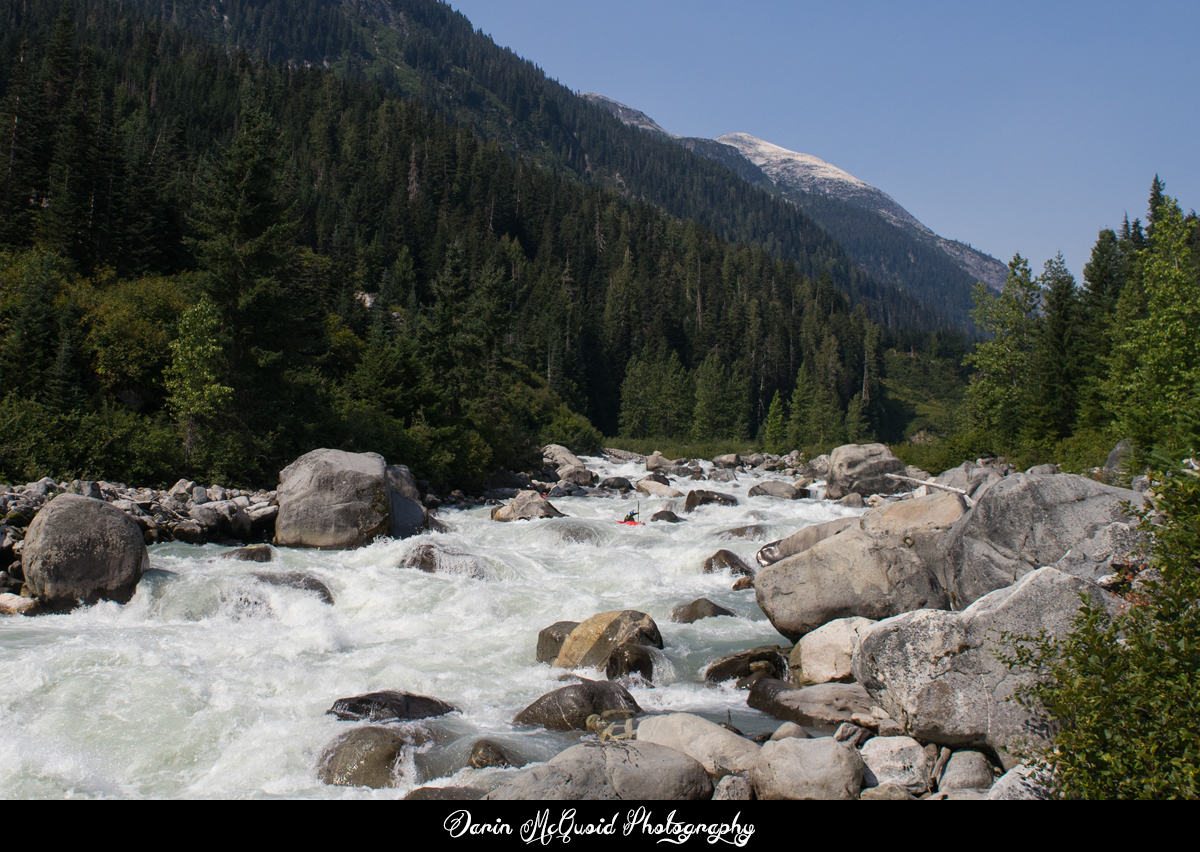
Michael Wutti, the action never seems to end!
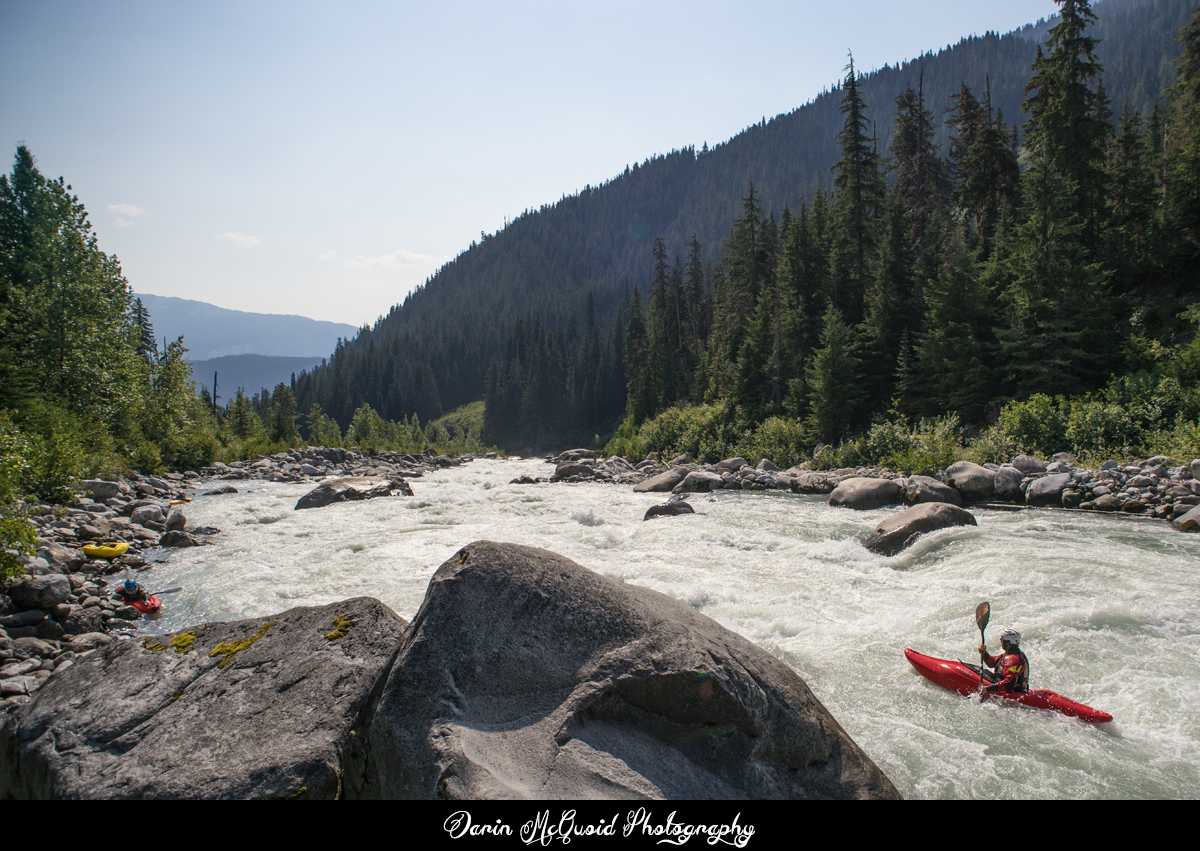
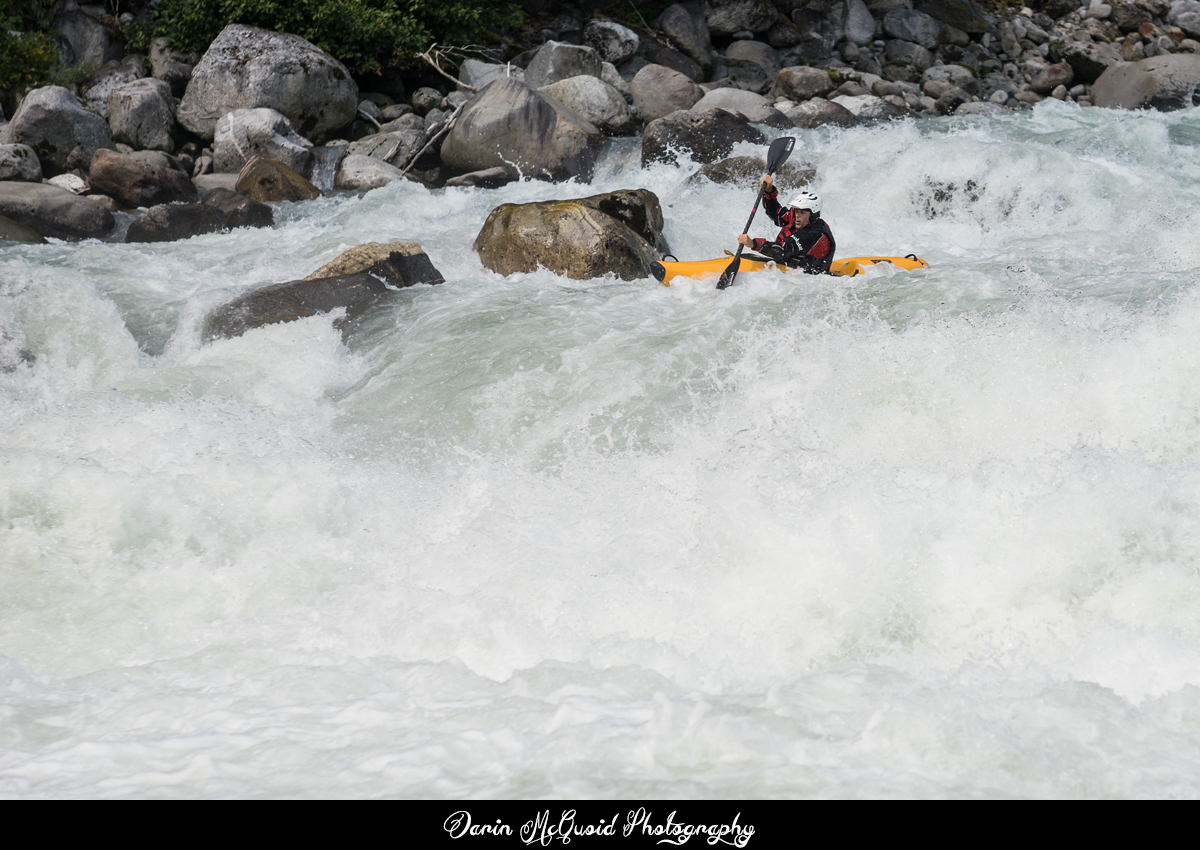

One
would never guess that it rained last night. Water levels are back down
and glorious blue skies reign above. Unsure of the day ahead we soak in
the sun but make sure to get on the water just before nine. Paddling
around the first corner below camp a team member us lucky and finds his
down jacket. Lost with the tent in last nights debacle we never thought
the jacket would be seen again. Twisting through an open section the
day starts off with some nice warm up. Looking downstream we see
another avalanche path and know that rapids reside downstream.
Marco Guidi below the start of serious business on day two.

We
are cruising along nicely with some aggressive read and run. The nature
of Clendenning Creek is a lot more like the Austrian Alps than
California. I'm happy to follow. Suddenly the brakes are on and we're
scouting a big cascade full of possible routes. None look ideal but
many look feasible. Rok Sribar ops to probe, followed by Manu Koehler. They run completely different lines, Rok going hard left and Manu hard right.
Manu Koehler

Rok Sribar lines up left for the bottom half.

Manu Koehler finds an alternative approach.

Clendenning Creek, one fine piece of whitewater.

Michael Wutti, the action never seems to end!

Really
it's one large rapid in here. By eddy hopping we've minimized scouting,
but are our for our third time today. There is one large hole to get
around. Then more downstream as always.
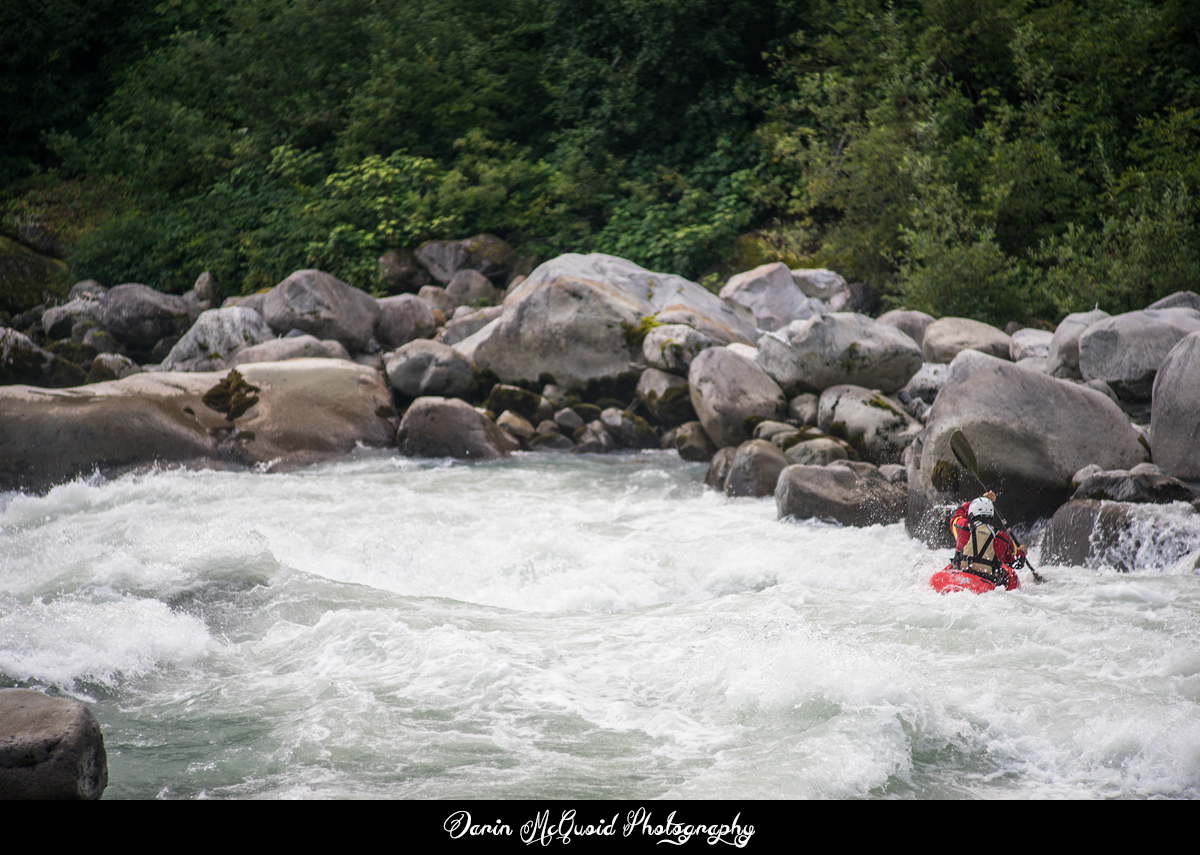
Michael Wutti drives right around the monster hydraulic.

Rok Sribar gets around the same.

Below
the crux hole the river is rowdy for another kilometer. We opt for a
lunch break and paddle repair, not sure how long the action will
continue. Satiated with food we return to the water, ready for more
challenging whitewater, yet fingers crossed that we're through.
Paddling a fantastic rapid around the bend, suddenly it is all over. We
relax and enjoy the scenery on the paddle out, happy to have finished
safely around one in the afternoon. Floating on the Elaho we form a
flotilla and all agree that with our flow of ~200cms the Clendenning
was more challenging than last weeks trip on the Grand Canyon of the
Stikine. Then again on the Clendenning one could always walk every
rapid, unlike the Stikine.
A few other write-ups on kayaking Clendenning Creek:
Liquid Lore
Professor Paddle
A few other write-ups on kayaking Clendenning Creek:
Liquid Lore
Professor Paddle
HTML
Comment Box is loading comments...